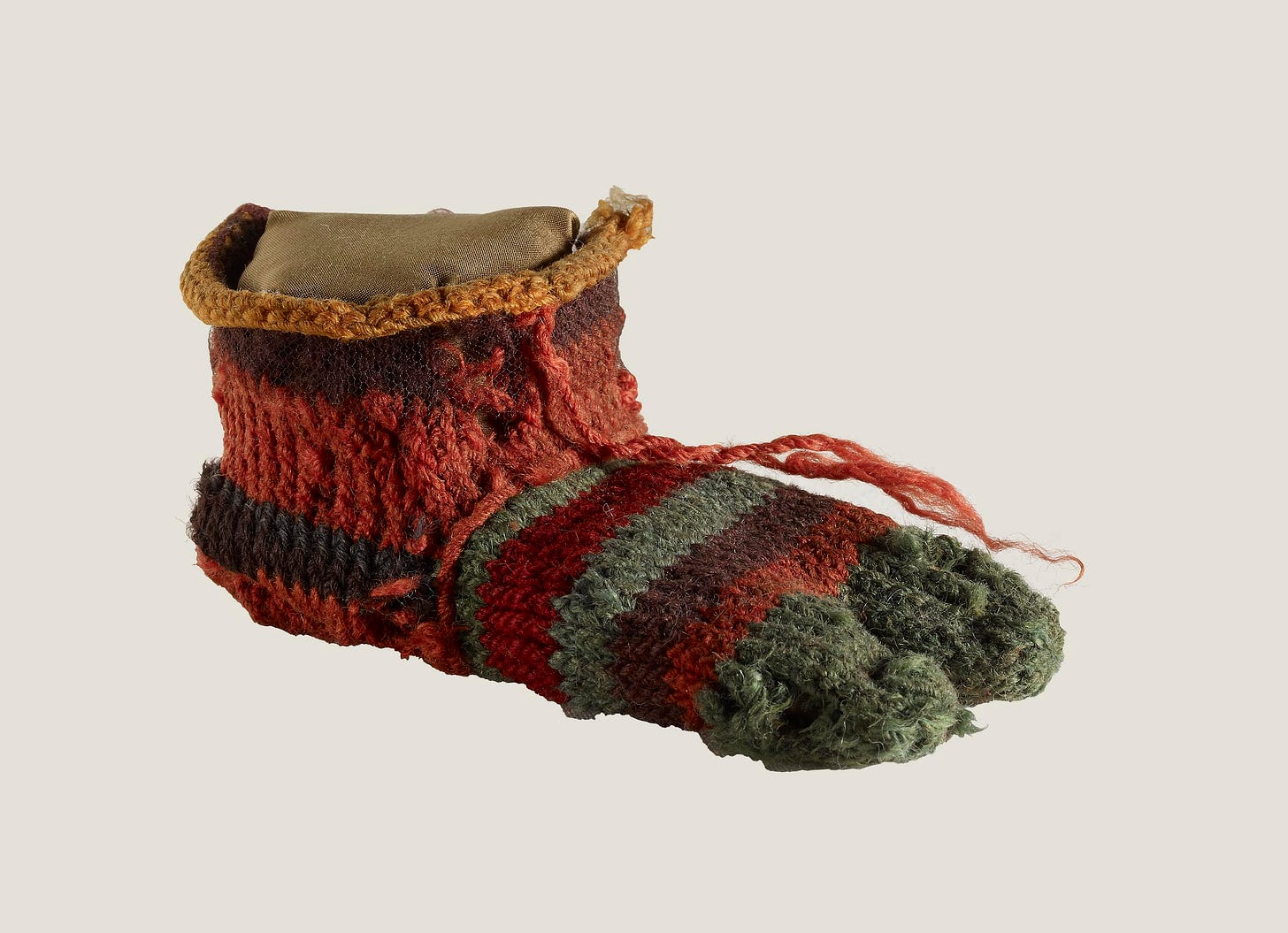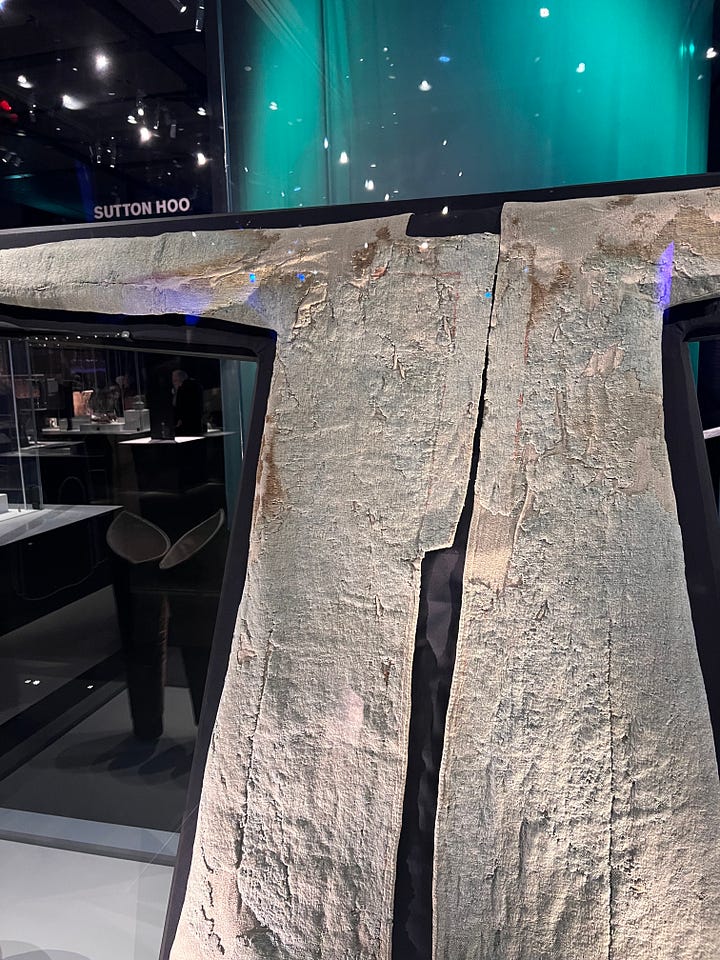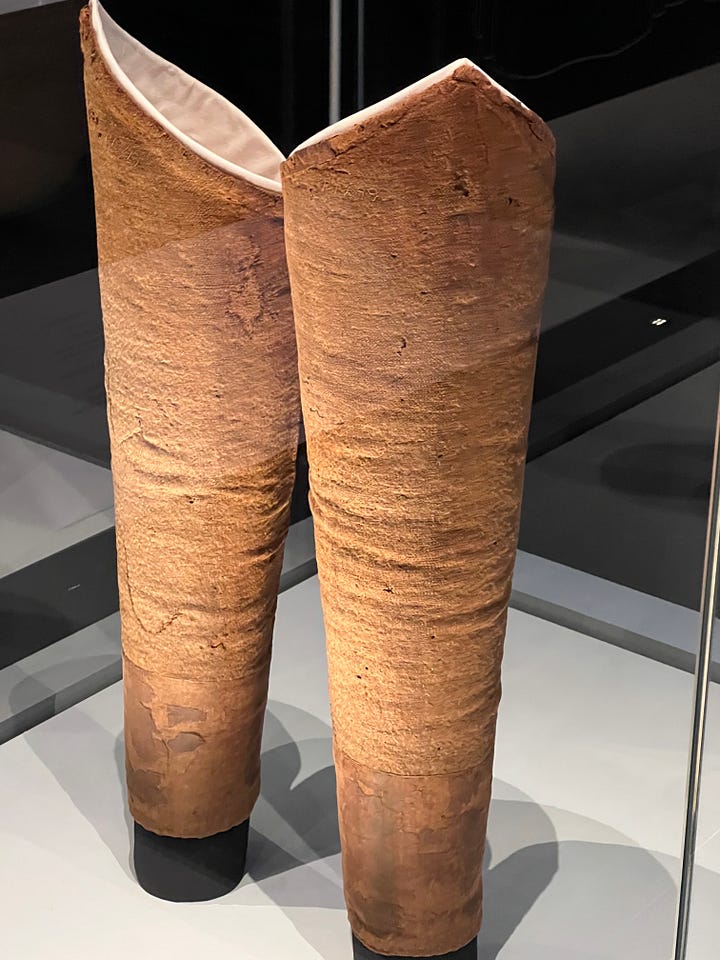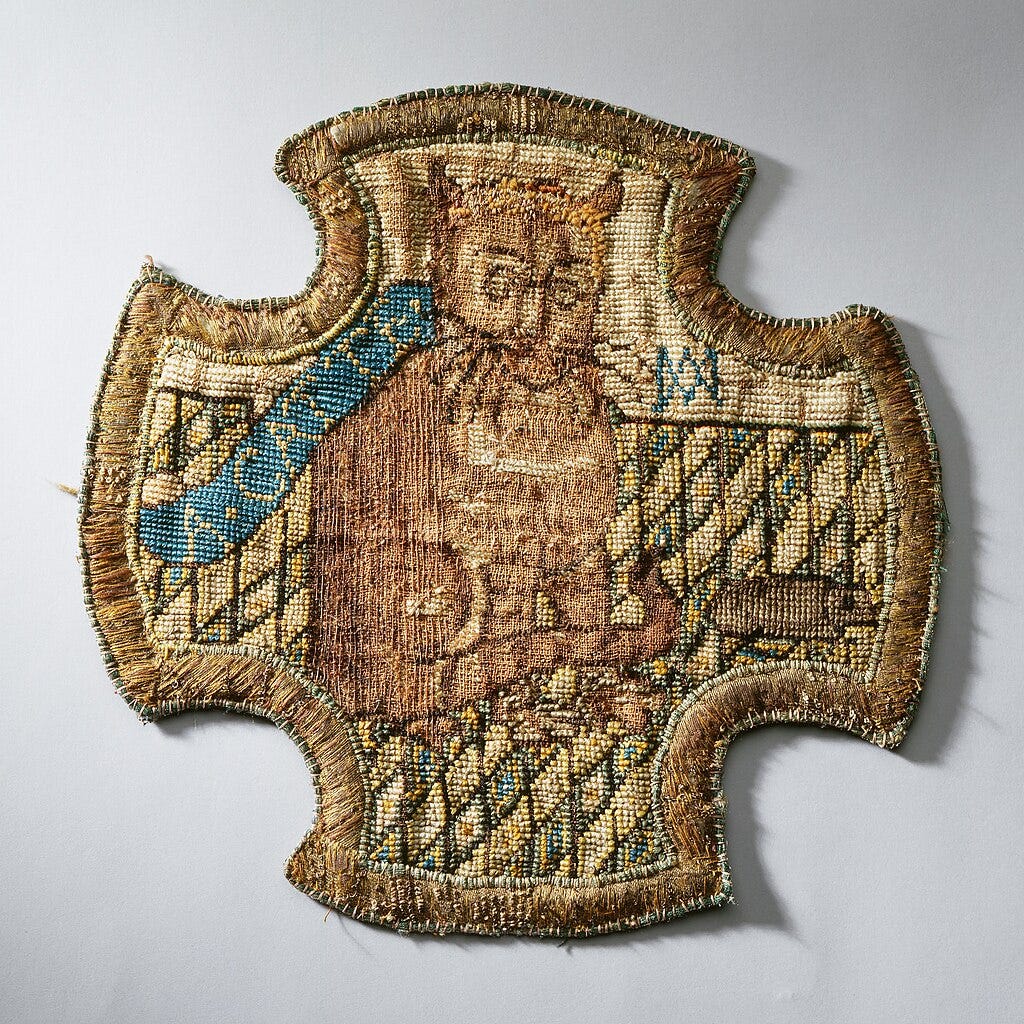Somewhere, underneath a choking tapestry of polyester, acrylic, and nylon, our planet is struggling to breathe.
In and amongst the landfills, where approximately 92 million tonnes of worldwide fast fashion waste lies — used once or twice before being offered to the behemoth gods of trend, style, and season — bacteria try to grow and flourish, to break down piles of toxic consumerism. They will not succeed, for these fabrics are dead stock, naturally inert, the terminal end of possibility for biological processes of death, decay and rebirth.
When I visit the local charity shop, part of my New Year’s resolution to reduce the environmental impact of my shopping habits, at least six tops bear a Shein or ASOS label. I think to myself, thank god they’re here, not in a landfill. And then I shudder, because eventually this charity shop itself will turn to dust, but the tops and their labels will remain, hanging in the void — long after I am gone, long after my children are gone, long after my great-great-great grandchildren are gone.
The fast fashion industry accounts for 8-10% of the world’s greenhouse gas emissions.1 This is an oft-cited statistic intended to remind people of the impact of their obsession with micro-trends and capsule wardrobes and TikTok Shop. But it also works to elide certain truths about ‘Fashion’ more widely. It offers a false, placating binary between the implied ’slow’ fashion of non-mass producing retailers: the great fashion houses and more expensive high street or just off high street brands. But, in 2017, British luxury house Burberry burned some £28 million worth of unsold clothing, fragrance, and accessories; although they now claim to engage in more sustainable practices of textile disposal.
Nevertheless, the industry continues to churn, the gods demand sacrifice. Whether or not large, luxury brands actually employ environmentally sustainable practices does not alleviate them from their responsibility. They are as integrated with the roughshod plastic noose tightening over our planet as Shein or H&M. Each participant in the seasonal-cyclical glorification of trend is as responsible for massive overconsumption as the other. I am aware it is unpopular to say, but the responsibility here lies with the consumer, too.
A great Youtube video essay on this here.
There is no ethical consumption under capitalism, the individual cannot be held to account for the crimes of the corporate giants, etc. — I am aware. But the consumer as a collective, which is the most meaningful collective paradigm we currently exist under, can be held responsible. And if we, individuals, make up and embody this collective, then it is time that responsibility fell to us, too.
The deep irony of the planetary fashion emergency is that it represents a sharp break with the traditional folds of history. Textiles are historically ephemeral. For most of the past, textiles tended to disintegrate and dissolve back into the earth, ready to support the ecosystem that gave rise to them in the first place; one which integrates humans and nature, a nose-to-tail consumption of animals and plants, a cradle to cradle revolution of products.
Textile history is a delicate and fragile art. Not only is it inherently fragmentary, it is understood to be inexorably so. The breakdown of the sources is an accepted fact of the field. Perfectly regulated lighting and humidity, the lightest and barest of conservatorial touches, the acknowledgement that beyond best efforts the colours of dyes will fade and the fine threads of silk or linen will wear down, closer and closer to snapping: these are the basic principles of studying textiles.
All sources, of course, break down in some way. But it is easier to continually preserve a glass tesserae embedded in the plaster of a monumental building than it is to try and stop the natural devolution of a material which craves to return to its original, molecular state. When I think of material agency, my mind naturally falls to textiles, which are filled with not only the agency of the people who made them, but seem to possess one independent of them too. Natural agency, or biological agency, perhaps?
I digress.
With this being said, this inherent breakdown is, evidently, one of the great burdens of historical practice, because it further silences people who are otherwise already silenced. Women, poor people, children, ethnic and religious minorities — those who the institutional sources have little to no interest in for their agendas. People who identified and expressed themselves through the clothing that they wore, even in the face of concerted effort by central authorities and powerful groups to deny these processes were taking place. Textiles are the antithesis of othering. Although in their construction, design, patterning, and use they represent the pinnacle of self-expression and individual or group identification, they simultaneously bind every separate people or culture through their universality. Even where textiles are minimally employed, or barely used, their lack indicates specific qualities of a scion of humanity.
In Late Antique and Byzantine studies, historians are largely reliant upon visual representation in other media forms — icons, mosaics, wall paintings — to determine what people wore, and how they formed their identities through that.2 These formats, however, are highly stylised and formal; showing people in the ancient and medieval equivalents of their Sunday best. We can only guess based on a tiny selection of surviving source material what people wore when they met up with friends at the market, what little outfits they dressed their toddlers in, what was woven by anonymous people (read: mostly women) in mixed residential-commercial properties, outside of formal economies, across the towns and villages of the empire.

When clothing was disposed of, it returned from whence it came: back to the soil, which grew the grasses eaten by sheep and goats, sheared again for their coats. Back to the sand, which housed the mollusc shells, once more carefully plucked, then crushed for their vivid purple hue.
When I visited the British Museum’s Silk Roads exhibition, I was stunned by the quality, variety, and vividness of a huge host of textiles on display, from all over the world. Particularly notable was the perfectly-preserved 6th century cashmere and wool riding coat and linen and silk gaiters from Byzantine Egypt, inspired by fashions from the neighbouring Sassanian Persians. I think I was most floored by the fact that this coat — obviously an item owned by a member of an elite class — was so vastly different to the contemporary portrayals of such elites, seen in portraits or statues or mosaics or any other media format. The scale of the loss that textile disintegration represents to the historical record hit me like a loom-weight to the skull.


More devastating, though, was the realisation that in our own time, no such reckoning can be had. The fashions of the elite are not only represented in an onslaught of photos and videos populating the increasingly dead internet. No, they are also laid flaccidly atop one another in heaped mounds on beaches in Ghana or in Chile’s Atacama Desert, the ‘graveyard,’ of the fast fashion industry. We see textiles everywhere, we dispose of textiles everywhere, and our obsession with markers of status and wealth through textiles has enabled us to turn a blind eye to the devastating waves of consumerism that wrack and wreck the planet with each Fashion Week.
Your favourite influencer wears an item of clothing once, so you wear that item of clothing three or four times, and then you both send that item of clothing to sit with its plastic cousins in Africa and South America. Worse still, your favourite influencer starts a fashion brand, making sweeping claims of sustainability and concern for environmental ethics. Then they start doing monthly drops and selling millions of pieces of stock. Or it comes out that their ‘sustainable’ manufacturing practices are little more than the occasional use of recycled plastic for, like, a zipper. Greenwashing, itself a rather pleasant term for a host of deeply unpleasant practices, ensues.
In the globalised — maybe post-globalised — world that we inhabit, the Silk Roads still exist. But they lie alongside, above and below, the Polyester Roads, which span land and sea, connecting all of us in an unbroken chain of polymers. These Polyester Roads do not only choke the earth, but they choke all of us who are bound by them. They are the roads that lead, near inevitably, to factory roofs collapsing on garment workers in Bangladesh, or to British fast fashion companies, like Boohoo, facing allegations of breaching modern slavery legislation in Leicester. They are the same roads that lead to precisely the same problems in the ostensibly ‘luxury’ fashion labour force, with LVMH group and Salvatore Ferragamo purportedly amongst the very worst offenders, per this report from January last year.
Arguably, the history of textiles is a history threaded with that of oppression. In his book Unravelling the Silk Road: Travels and Textiles in Central Asia, Chris Aslan speaks of the three, intertwined textile roads that connected these otherwise remote regions to the rest of the planet: the Silk Road, the Wool Road, and the oppressive Cotton Road. Regarding textile history’s threading with histories of oppression, look no further too than the primary industry of the Trans-Atlantic Slave trade: the production of cotton. More than this, it was a history grounded in the artistic capacity of women, across many cultures over time, and yet, the names of these overwhelmingly female artisans are usually lost to us. For an individual case study, we need only take the the sixteenth-century imprisonment of Mary, Queen of Scots, along with the Countess of Shrewsbury, Elizabeth Talbot, where they embroidered the ‘Oxburgh Hangings.’ These tapestries were made in defiance of Mary’s prison sentence, whilst confined to Oxburgh Hall, Norfolk from 1570-1585. Into these needlework pieces, Mary wove political symbolism and messaging, trying to communicate with the world beyond Oxburgh Hall’s walls.

However, textile history is also a history threaded with cultural stories of life, love, and death. In the Grimm Brothers’ fairy tale, Sleeping Beauty, the titular beauty Rosamond pricks herself on a spindle and falls into a deep slumber. Her fate has been prophesied since she was a child, her life’s path determined by the spinning of yarn, as was the case for so many women before and after her. The three Fates (Moirai) of Greek mythology infamously spin the threads of destiny, cutting the ‘thread’ of the lives of heroes and monsters and men. Penelope, desired wife of Odysseus, shows her devotion to her husband through the endless weaving and unpicking of his death shroud; becoming a martyr figure for abandoned, beleaguered wives everywhere.


The underlying matrix binding each of these tales is the connection between textiles and human destinies. It is this underlying mythological matrix that reflects and represents the lived experience of people bound up forever with their textiles.
Now, though, our textile histories are being warped. Warped by the mismanaged weight of plastic t-shirts and leggings dumped on the earth. Warped by the smog emitted from factories producing those plastic clothes. Warped by the micro-plastics in the blood of the fish that we scoop up en masse from the ocean; in plastic-twine nets which frequently ensnare dolphins, seals, and sharks. Warped by the cancerous chemicals found in clothing from manufacturers like Shein and Temu, seeping into our bloodstreams as they seep into the streams by the factories emitting smog as they produce those plastic clothes, ready to be dumped onto the earth.
Somewhere, in the past, a young woman sits at a loom and weaves her wedding trousseau. She delicately and lovingly embroiders flowers and hearts, or she depicts animals of fortune. Somewhere, in the past, a powerful woman of her community commissions a hanging of herself to sit in her local church, that which she helped fund and decorate. Somewhere, in the past, a small child runs amok and muddies the wool cloak that his mother picked up, newly mended, from his grandmother a week prior.
Today, in the present, we are so disconnected from the love and intricacy of textiles that we do not see how our relationship to them is killing the earth. I believe that if we better understood the transient nature of textiles, if we could see how readily the past slides between our fingers like silk, we would be more thoughtful of how we consume them today. I qualify this by saying I am someone who loves fashion and design, and who, until recently, really loved consumption. In fact, I still do, I’m just trying very hard to be more mindful of it. But studying textiles has revealed the interwoven nature of these issues. We are, for the most part, utterly separated from the textile arts. As such, our awareness of how they impact every facet of the world around them is limited. If textiles are no longer living, breathing things in our hands, smelling of wet sheep and crushed berries and herbs for dyes, then we allow the dead petroleum materials to take over.


At this point, I have spent numerous hours scouring YouTube for weaving videos, because I am unable to understand when textile historians mean when they talk about specific weave compositions or loom types. The videos are helpful, but I have come to the conclusion that I will only begin to understand these things if I learn to make textiles myself, however basic they might be. The longer that I spend looking between these videos, thinking about what textile art I’d like to learn, and digging through museum collections and exhibition books and archives for textile material of the past, the more that I feel ingratiated with both my own consumption habits and the past. It also serves as a stark reminder that culture, society, and the environment have always been pressed together.



More than that, it seems to me that the study of the past ought to necessitate an ethical approach both to that historical reality and to our contemporary one. Textile history is a vessel for the environmental and eco-critical humanities by virtue of its very existence, and yet it remains an understudied field and an under-utilised source base, perhaps because of the complexities I spoke about regarding our contemporary disconnect from textile production (although the same could be said for food production, building architectural monuments, crafting communities, etc., honestly). In any case, becoming aware of the making and meaning of textiles has made me more aware of the injustices of the modern fashion industry, socially and environmentally.
As always, I do not necessarily want to provide precise solutions, besides continuing on a journey to practice a more mindful consumption of fashion products and encouraging others to do the same. But I think that people tire quickly of the moralising lessons espoused on various social media platforms about the ills of fashion, fast or not.
What I think is more interesting is to posit that a closer relationship to textiles, viewing them as living and breathing materials, and hence also seeing clothing that comes from them in the same way, may well make us all more conscious of our consumptive habits. Equally, prioritising artisanship and crafts(wo)manship in textile production, allowing this ‘woman’s work’ to be a valued and central art form, will necessarily engender respect for textile practice. The lack of respect that we have for what it means to work in textiles, for the historical fragility of the medium, leaves us susceptible to treating textile material as though it is inherently disposable. The Silk Roads was an excellent primer for a future path forwards. By centring the tale of textiles, showing their social, economic, cultural, and political importance, a platform opened up for me (and I hope for other members of the audience), to start considering how the clothes that I wear fit into this. How my participation in current global networks of textile trade not only shapes my identity, but the realities of people and ecosystems across the world.
The Polyester Roads will continue to choke the planet for a long time to come, such is the nature of the false materiality of plastic fibres. But beginning to connect with the textile past, sheared, cut, spun, woven, embroidered, frayed, and disintegrating as it is, could institute a sea-change for our collective engagement with the fashion industry.
Personally, I think there is something touching and romantic about rejecting the fastness of it all and returning to the slow, cyclical relationship of people to textiles, where we seem to be one and the same; in that we shall both, eventually, disintegrate back into the ground, for the process to begin again.
Links, videos, books and articles:
Textile production in the EU/environmental impacts:
Le Monde, on Shein and Temu cancerous/toxic chemicals: https://www.lemonde.fr/en/international/article/2024/08/14/shein-and-temu-products-found-to-contain-high-levels-of-toxic-chemicals_6715032_4.html
Report on LVMH/Salvatore Ferragamo questionable labour practices:
Rana Plaza factory collapse tragedy: https://cleanclothes.org/campaigns/past/rana-plaza
Boohoo and modern slavery report: https://gflc.ca/boohoo-and-modern-slavery/
Guardian article on Ghana’s beaches as sites of horrific fast fashion pollution: https://www.theguardian.com/fashion/2024/sep/24/where-does-the-uks-fast-fashion-end-up-i-found-out-on-a-beach-clean-in-ghana
Nat Geo report on the Atacama Desert’s fashion pollution: https://www.nationalgeographic.com/environment/article/chile-fashion-pollution
Dumbarton Oaks Textiles Catalogue (for Late Antique and Byzantine textiles): https://www.doaks.org/resources/textiles/catalogue#b_start=0
A great YouTube video essay by Katie Robinson about the increasing blurring of the lines between ‘fast fashion’ and ‘luxury fashion:’
- From the same creator, about influencer brands (the Matilda Djerf tea, primarily):
Weaving videos:
From Wool to Cloth: Using a Historical Technique, by JillianEve:
Weaving on Mount Vernon’s Eigtheenth Century Loom, by George Washington’s Mount Vernon:
How to Weave: Weaving for Beginners, by Fibers and Design Weaving:
Article from the V&A on the Oxburgh Hangings: https://www.vam.ac.uk/articles/prison-embroideries-mary-queen-of-scots?srsltid=AfmBOoqVe4bl8E3QmV2LtwLpSH_oz6zXbjSrio10Eh1ZuPlzOE7qiuia
Books and articles:
Ball, J., Byzantine Dress: Representations of Secular Dress in eighth- to twelfth-century Painting, (New York, NY; Basingstoke: Palgrave MacMillan, 2005)
Barber, E., Women’s Work: The First 20,000 Years. Women, Cloth, and Society in Early Times (New York, NY: W.W. Norton, 1994)
Federici, S., Caliban and the Witch: Women, the Body, and Primitive Accumulation, (London: Penguin Classics, 2021)
Kelley, A.C., ‘Searching for Professional Women in the Mid to Late Roman Textile Industry’ in Past and Present 258 (2023), pp.3 - 42
Kelley, S.E., and Arden, T., (eds.), Gendered Labour in Specialised Economies: Archaeological Perspectives on Female and Male (Boulder, CO.,: University of Colorado Press, 2016)
Especially Chapter 11: Harrington, S., ‘From Warp and Weft to Spear and Spindle: Gender Identity and Textile Manufacture in Early Anglo-Saxon England’
Orhman, M., ‘A Warped Vision: Manipulating Roman Looms for Metaphorical Effect — Potamius of Lisbon’s Epistle de Substantia 5-9’ in Humanities 71 (2018) pp.51-70
Monnas, M., and Granger-Taylor, H., (eds.), Ancient and Medieval Textiles: Studies in Honour of Donald King (London: Pasold Research Fund, 1989)
Muthesius, A., Byzantine Silk Weaving: AD 400 to AD 1200, (Vienna: Fassbaender, 1997)
Thomas, T., and Ball, J., (eds.), Designing Identity: the Power of Textiles in Late Antiquity, (Princeton: Princeton University Press, 2016)
Stafford, G., ‘Veiling and Head-Covering in Late Antiquity: Between Ideology, Aesthetics, and Practicality,’ Past and Present 263 (1), (2024), pp.3-46
Statistic from Greenpeace: H. Abelvik-Lawson, ‘How fast fashion fuels climate change, plastic pollution, and violence,’ https://www.greenpeace.org/international/story/62308/how-fast-fashion-fuels-climate-change-plastic-pollution-and-violence/#:~:text=Partly%20because%20of%20all%20this,%E2%80%935%20billion%20tonnes%20annually) (accessed 17/03/25); cf. Carbon Literacy: https://carbonliteracy.com/fast-fashions-carbon-footprint/
J. Ball, Byzantine Dress: Representations of Secular Dress in eighth- to twelfth-century Painting, (New York, NY; Basingstoke: Palgrave MacMillan, 2005); T. Thomas, and J. Ball, (eds.), Designing Identity: the Power of Textiles in Late Antiquity, (Princeton: Princeton University Press, 2016)



